In Fig. there are two sliders and they can slide on two frictionless parallel wires in uniform magnetic field B, which is present everywhere. The mass of each slider is m, resistance R and initially these are at reat. Now, if one slider is given a velocity v0, what will be the velocity (in ms−1)) of other slider after long time ? (neglect the emf self-inducetion)
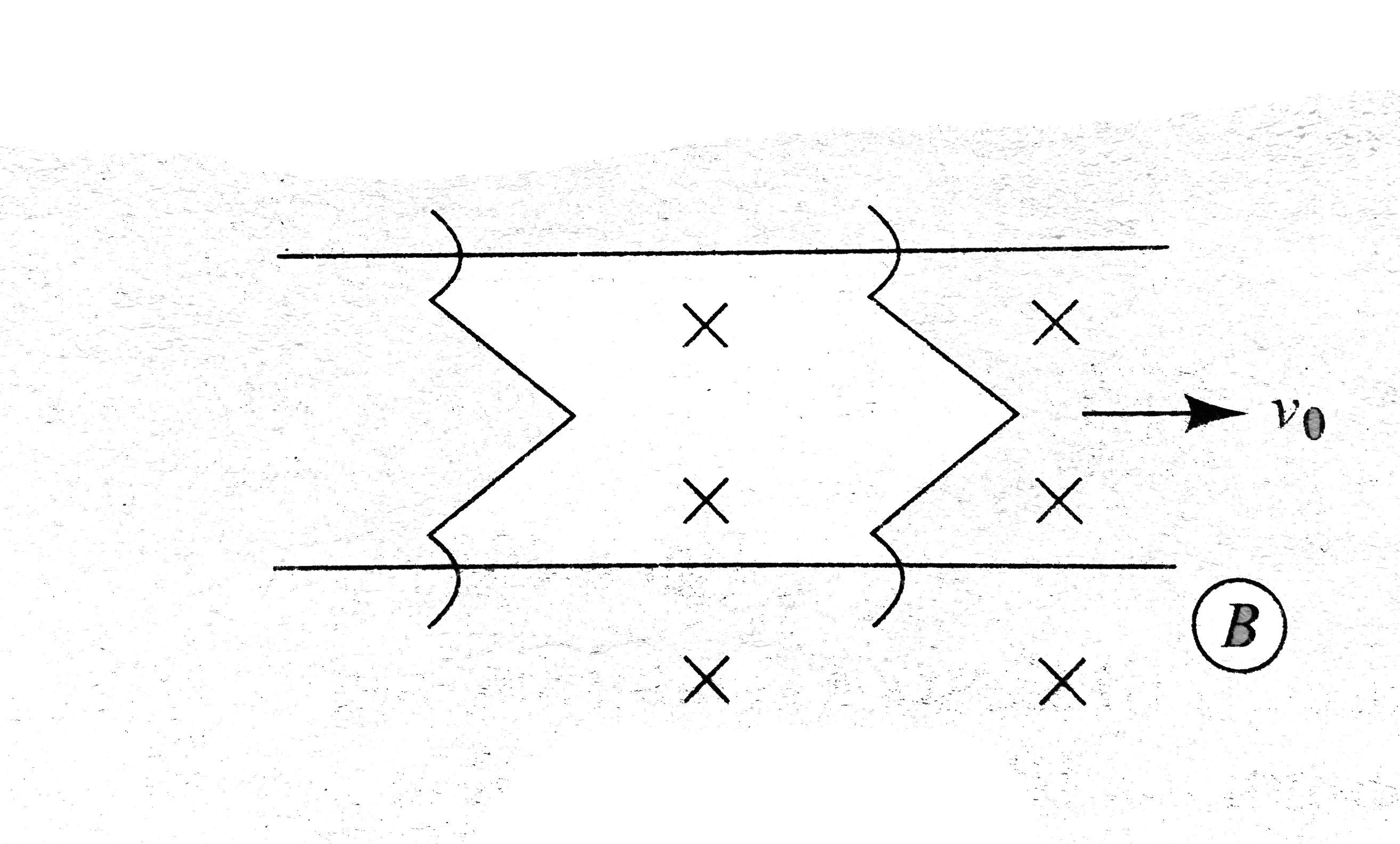
v04
v02
v0
zero
The correct Answer is:B
Step by step video & image solution for In Fig. there are two sliders and they can slide on two frictionless parallel wires in uniform magnetic field B, which is present everywhere. The mass of each slider is m, resistance R and initially these are at reat. Now, if one slider is given a velocity v_(0) , what will be the velocity (in ms^(-1)) of other slider after long time ? (neglect the emf self-inducetion) by Physics experts to help you in doubts & scoring excellent marks in Class 12 exams.
Updated on:21/07/2023Similar Questions
In Fig. there are two sliders and they can slide on two frictionless parallel wires in uniform magnetic field B, which is present everywhere. The mass of each slider is m, resistance R and initially these are at reat. Now, if one slider is given a velocity v0=16ms−1, what will be the velocity (in ms−1)) of other slider after long time ? (neglect the emf self-inducetion)

View SolutionA rectangular loop with a slide wire of length l is kept in a uniform magnetic field as shown in the figure. The resistance of slider is R. Neglecting self inductance of the loop find the current in the wonnector during its motion with a velocity v.

View SolutionA proton is moving along the negative direction of X-axis in a magnetic field directed along the positive direction of Y-axis. The proton will be deflected along the negative direction of
View SolutionA conducting rod shown in figure of mass m and length l moves on two frictionless horizontal parallel rails in the presence of a unifom magnetic field directed into the page., The rod is given an initial velocity v0 to the right and is released at t=0. Find s a function of time
a. the volocity of the rod
b. the induced current and
c. the magntitude of the induced emf.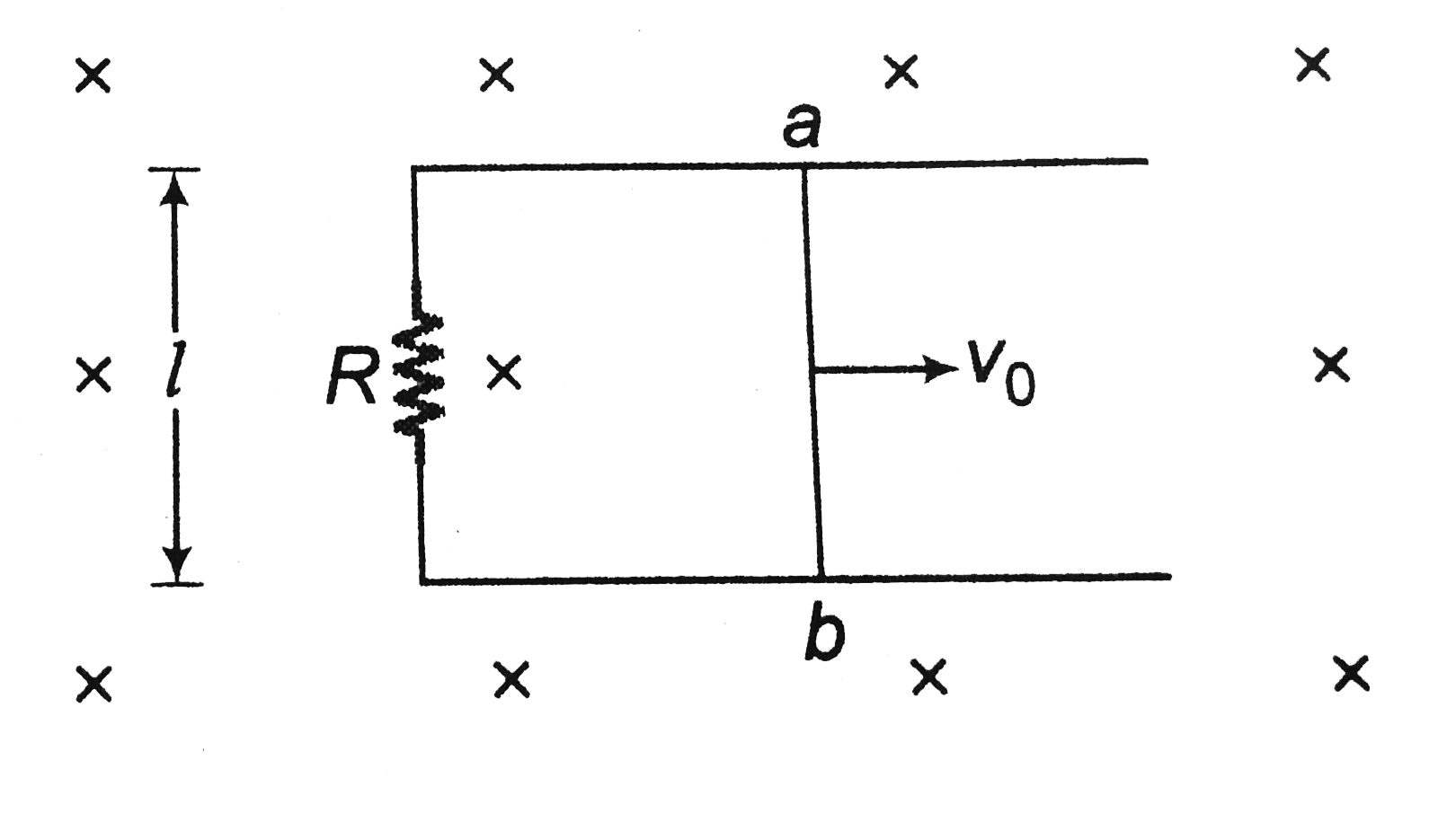
View SolutionTwo infinite parallel wire, having the cross sectional area 'a' and resistivity 'k' are connected at a junction point 'p' (as shown in the figure). A slide wire of negligible resistance and having mass 'm' and length 'l' can slide between the parallel wires, without any frictional resistance. If the system of wires is introduced to a magnetic field of intensity 'B' (into the plane of paper) and the slide wire is pulled with a force which varies with the velocity of the slide wire as F=F0v, then find the velocity of the slide wire as a function of the distance travelled.
(The slide wire is initially at origin and has a velocity v0)
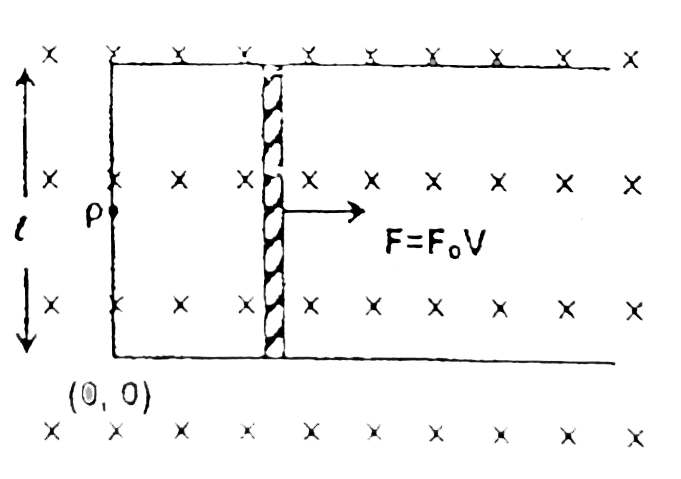
View SolutionA non-uniform magnetic field →B=B0(1+yd)(−ˆk) is present in region of space in between y=0&y=d.The lines are shown in the diagram.A particle of mass m and positive charge q is moving.Given an initial velocity →v=v0ˆi.Find the components of velocity of the particle when it leaves the field.
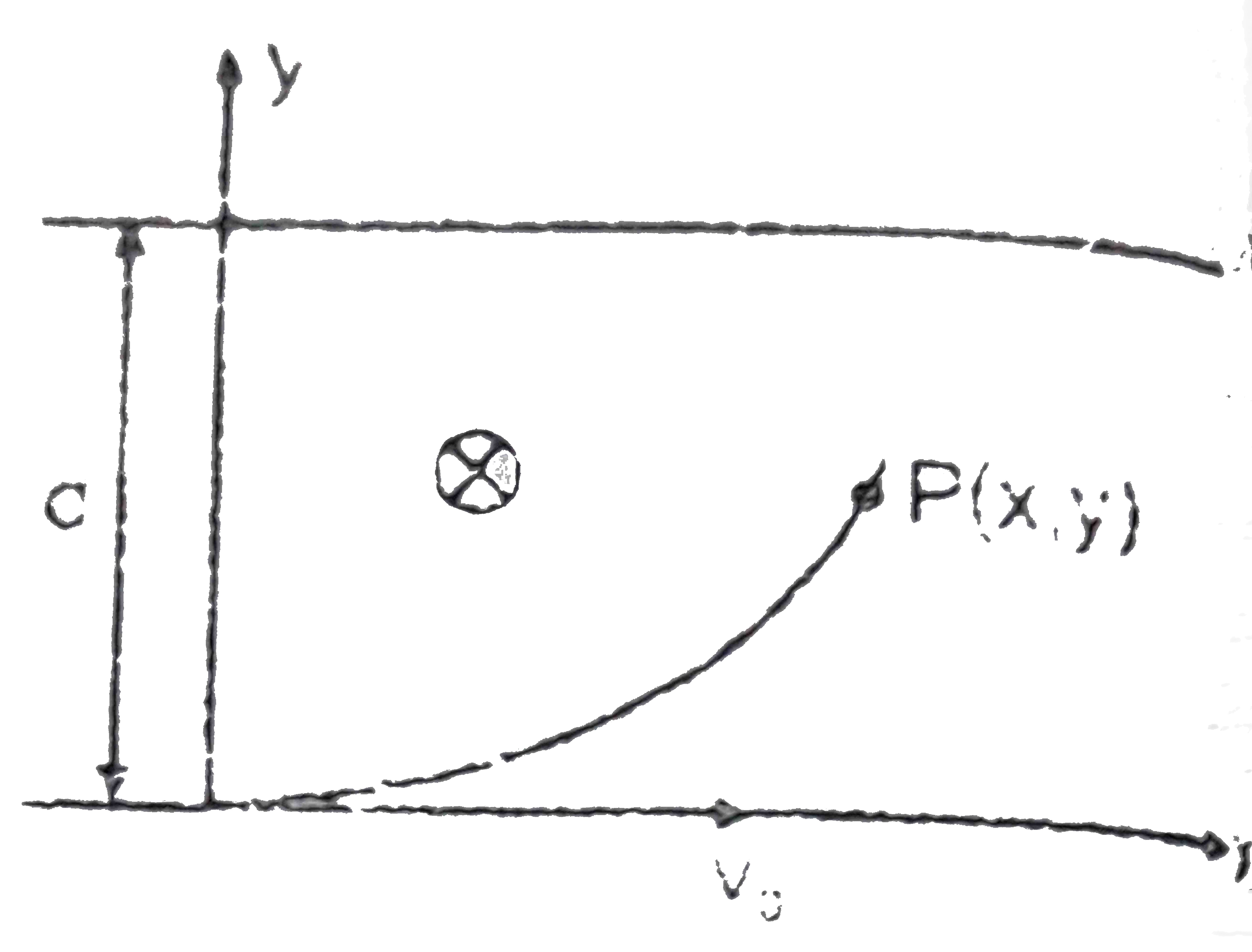
View SolutionA metallic rod of mass m and resistance R is sliding over the 2 conducting frictionless rails as shown in Fig. An infinitely long wire carries a current I0. The distance of the rails from the wire are b and a respectively.
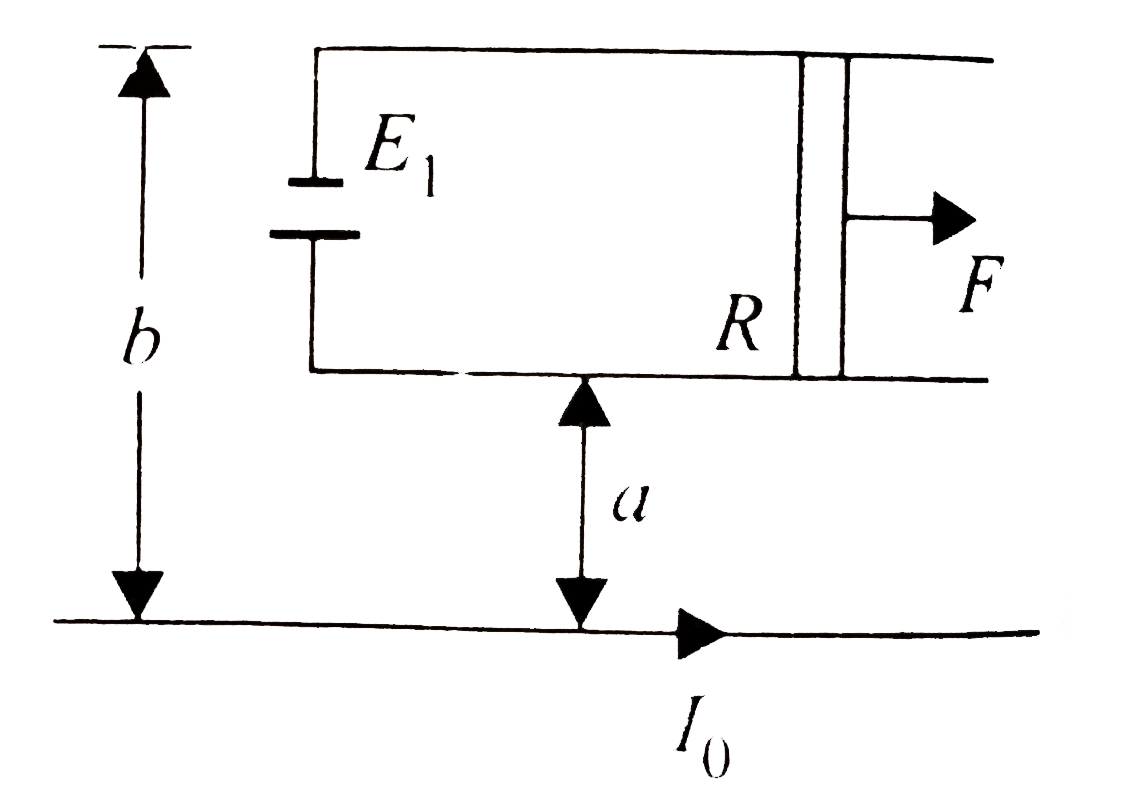
Find the value of F if the rod slides with constant velocity
View SolutionIn the network shown, the connector of mass m, length l and negligible resistance can smoothly side along two fixed parallel rails. The capacitor is initially uncharged and ET a uniform magnetic field B exists in the region directed into the plane of paper. If the switch S is closed at t=0 then the charge on the capacitor after long time is
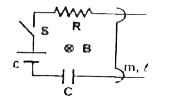
View SolutionA magnetic field B=B0sin(ωt)ˆk covers a large region where a wire AB slides smoothly over two parallel conductors separated by a distance d, Fig. The wires are in the x-y plane. The wire AB (of length d) has resistance R and parallel wires have negligible resistance. If AB is moving with velocity υ, what is the current in the circuit ? What is the force needed to keep the wire moving at constant velocity ?
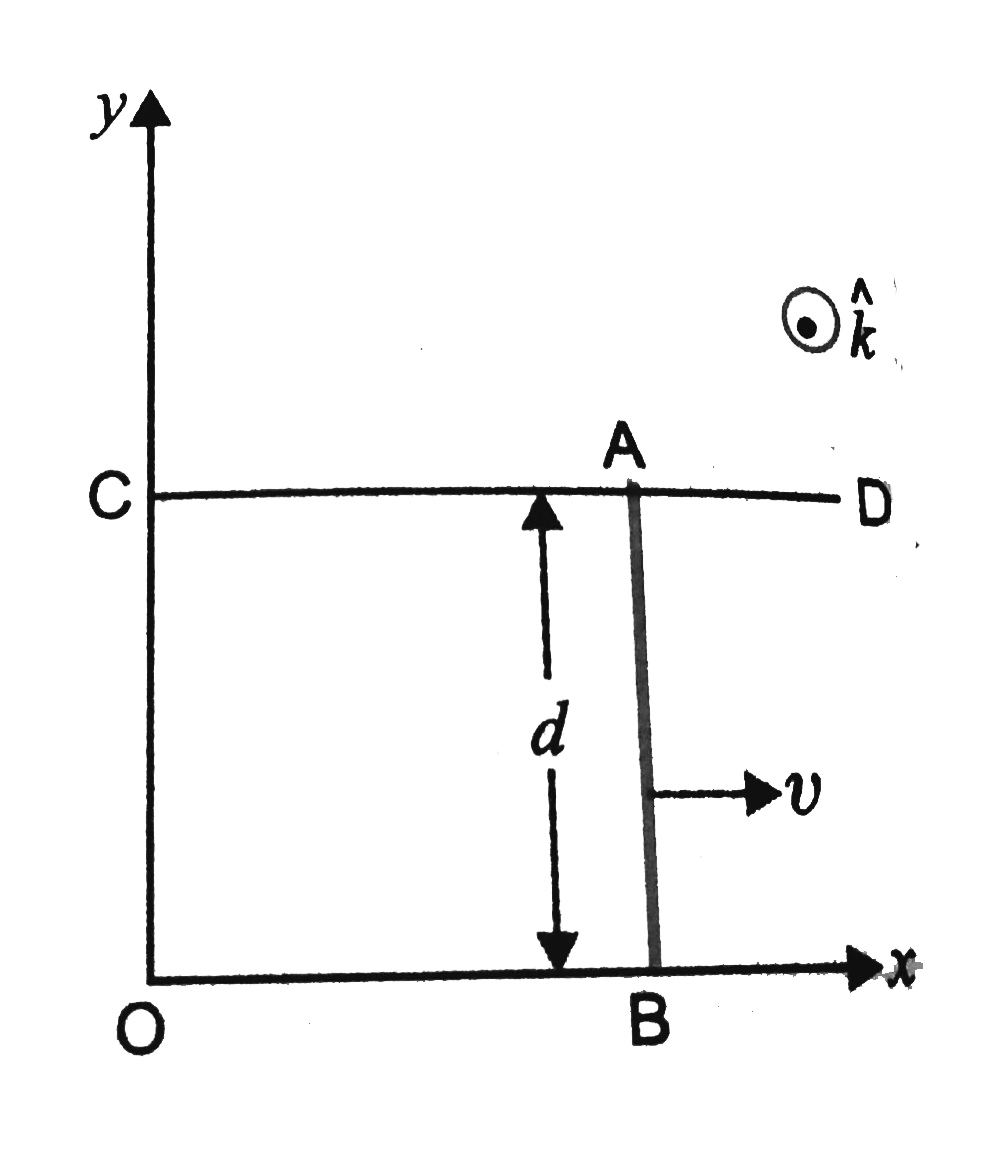
View SolutionConsider parallel conducting rails separated by a distance l. There exists a uniform magnetic field B perpendicular to the plane of the rails as shown in Fig. Two conducting wires each of length l are placed so as to slide on parallel conducting rails. One of the wires is given a velocity v0 parallel to the rails. Till steady state is achieved, loss in kinetic energy of the system is
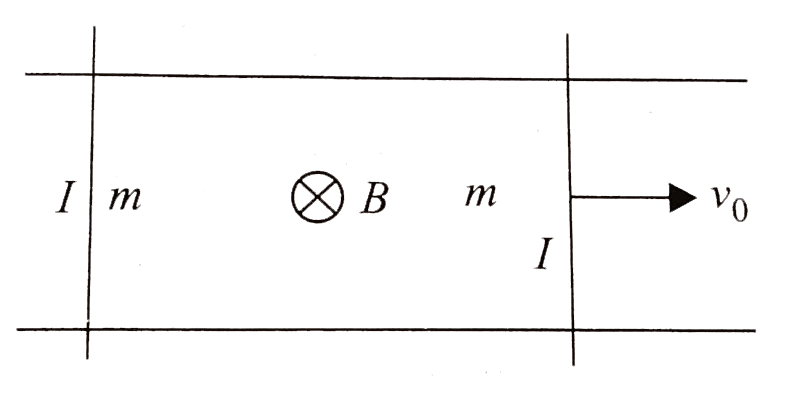
View Solution
